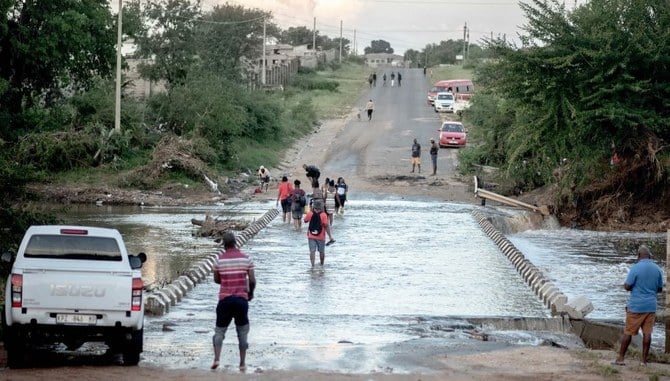Myriam Cataneda Solares
The world is in the midst of the worst food crisis in modern history. As a confluence of geopolitical, economic and climate crises fuels global shortages, a staggering 326 million people in dozens of countries need humanitarian aid, with 222 million facing acute food insecurity and up to 50 million at risk of starving to death. The poorest countries have been hit the hardest by the rise in global food prices caused by the war in Ukraine. And with the looming climate catastrophe threatening to compound the effects of conflict and supply chain disruptions, the humanitarian sector must adopt a more proactive, anticipatory approach to the growing hunger crisis.
Until relatively recently, humanitarian organizations did not pay much attention to climate change. But the proliferation of weather-related humanitarian emergencies has caused the sector to recognize the threat that the climate crisis poses to low-income countries and to the global food system. While the deadly floods and heatwaves that have struck Europe over the last two years have shown that even countries considered to be relatively safe are not immune to extreme weather events, developing countries are much more vulnerable. In 2021, 94 percent of internally displaced people became so as a result of climate-related hazards. Last year’s floods in Pakistan, which shocked the world, submerged a third of the country, claimed more than 1,730 lives, affected 33 million people, and caused economic losses estimated at $16.3 billion.
With climate change causing humanitarian crises all over the world, the number of people in need of aid has increased by 40 percent over the past year. In response to the growing need, funding for humanitarian causes has nearly doubled over the past decade, reaching $31.3 billion in 2021. But while funding has increased, the challenge facing international agencies and nongovernmental organizations today is to maximize the impact of these resources and empower local and national organizations. As matters currently stand, two-thirds of all direct contributions to humanitarian causes go to UN agencies and prominent international organizations like the Red Cross and Red Crescent. While these large institutions play a crucial role, community-based initiatives often have a better grasp of local contexts. The world’s largest donors and NGOs seemed to acknowledge this when they launched the Grand Bargain initiative in 2016, committing to provide 25 percent of humanitarian funding to local organizations. But seven years after the agreement was announced, the figure is still less than 2 percent.
So far, the sector’s modus operandi has been reactive. Whether it is Haiti, Ethiopia or Pakistan, the methods are the same: a crisis emerges, a humanitarian appeal is launched, funding is raised and assistance is delivered many days (if not months) later. But by relying on climate science, we can anticipate risks and address humanitarian needs before they become emergencies. Anticipatory action, defined as “acting ahead of predicted hazardous events to prevent or reduce acute humanitarian impacts before they fully unfold,” involves forecasting mechanisms and pre-agreed triggers and thresholds for releasing funds in advance. By responding to needs in this way, we can deliver aid more effectively and in a more dignified way. In 2019, for example, the Senegalese government and Start Network each purchased insurance policies against drought, allowing them to receive funding for humanitarian action and coordinate measures to protect at-risk communities.
But anticipatory action also has its limits. As a recent report by Start Network shows, not all crises can be forecasted or modeled. Even so, adopting this approach would allow humanitarian actors and organizations to be proactive, improve efficiency and prevent life-threatening events from developing into large-scale disasters. The global aid system needs rapid reform. While some progress has been made in recent years, much of it has been transactional rather than transformative.
To be sure, the problems we face are complicated and multidimensional, and we cannot disregard the political dimension of humanitarian action. Some may believe that necessity or desperation will force the sector to change for the better, but scaling up anticipatory and locally led action represents a far more promising path. The ongoing climate crisis offers a unique opportunity for evidence-based humanitarian reform. In our data-driven world, there is no reason to wait until disaster strikes. By anticipating risks and planning ahead, we can protect vulnerable communities and make the world a safer place.
Arab News







